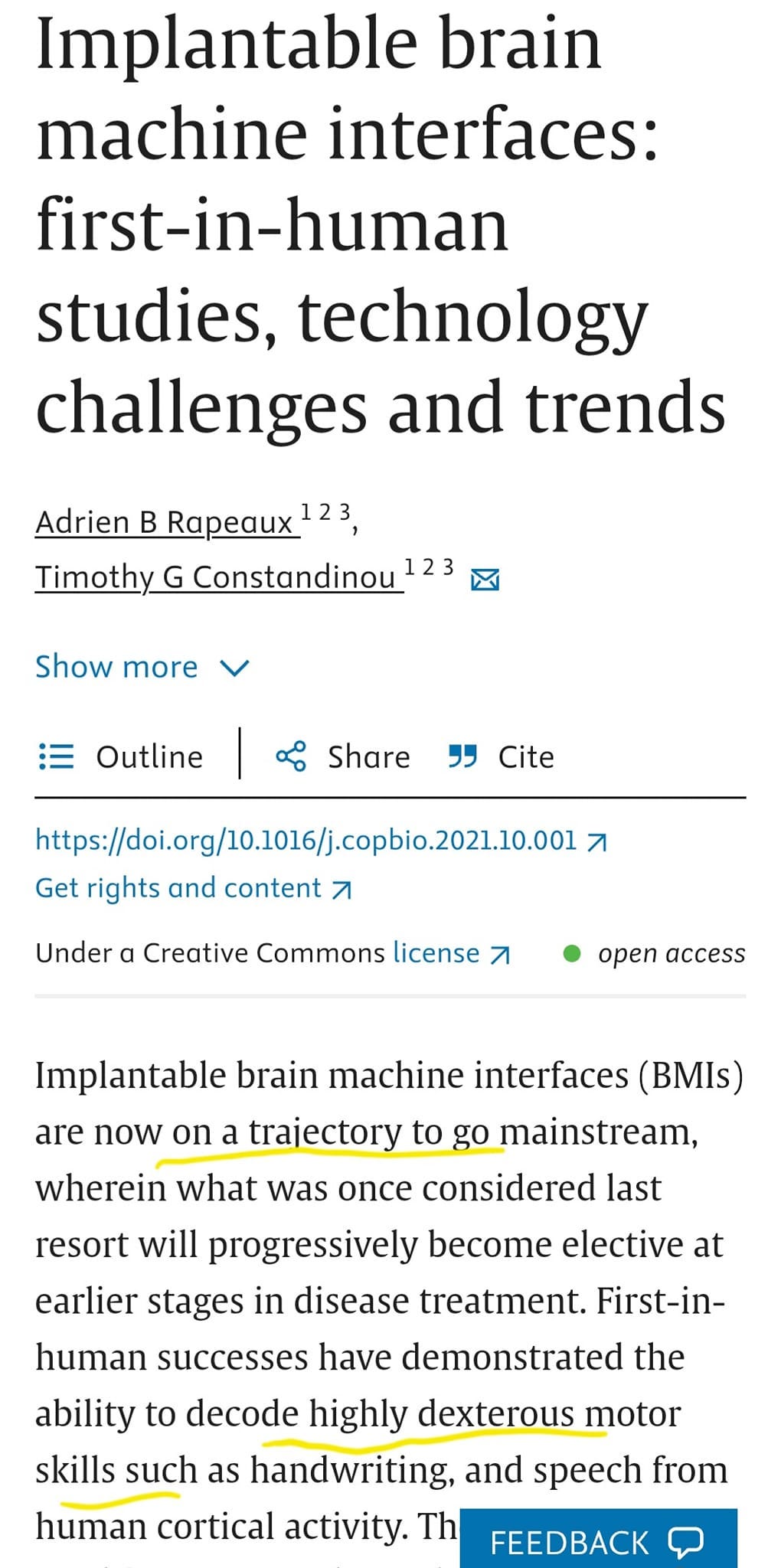Brain Machine Interfaces
Implantable Brain Machine Interfaces (BMI) are on a trajectory for mainstream usage.
Musk's Neuralink seeks human recruits for testing brain implants. (During the Neuralink trials between 2018 - 2022 on animals an estimated 1500 animals were killed.)
These implants will communicate with external devices, monitor and collect data on brain activity including thoughts, and control external devices via the brain activity.
Some implants being tested have 256 microscopic sensors on the size of a postage stamp.
Due to the wireless component of implants, there are issues with radio frequency signal and radiation:
1. The EMF radiation being emitted from brain implants is being absorbed into the brain, skull, and skin, thus causing potential harm and limiting the signal.
2. The EMF radiation of implants uses large wavelengths (2G - 4G), which places constraints on the size of implants. Hence, shorter wavelengths with higher frequency are likely in the future.
The potential for these implants is to decode human thought and monitor thought in real-time, which would enhance human digital twins (real-time replication of human beings).









